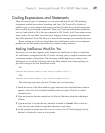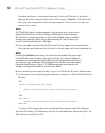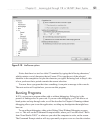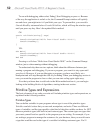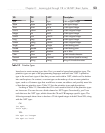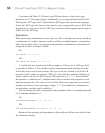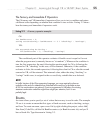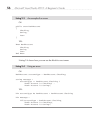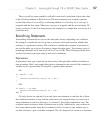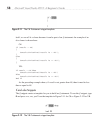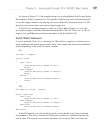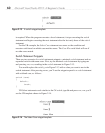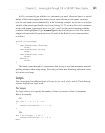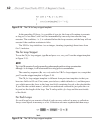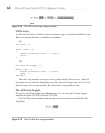
Chapter 2: Learning Just Enough C# or VB.NET: Basic Syntax 57
The accountType enum variable is a BankAccount and is initialized to have the value
of the Checking member of BankAccount. The next statement uses a ternary operator
to check the value of accountType, evaluating whether it is Checking. If so, message is
assigned with the first string. Otherwise, message is assigned with the second string. Of
course, we know it’s the first string because the example is so simple that you can see it is
coded that way.
Branching Statements
A branching statement allows you to take one path of many, depending on a condition.
For example, consider the case for giving a customer a discount based on whether that
customer is a preferred customer. The condition is whether the customer is preferred or
not, and the paths are to give a discount or charge the entire price. Two primary types of
branching statements are if and switch (Select Case in VB). The following sections show
you how to branch your logic using if and switch statements.
Expressions
If statements allow you to perform an action only if the specified condition evaluates to
true at runtime. Here’s an example that prints a statement to the console if the contents of
variable result is greater than 48 using the > (greater than) operator:
C#:
if (result > 48)
{
Console.WriteLine("result is > 48");
}
VB:
If result > 48 Then
Console.WriteLine("Result is > 48")
End If
C# curly braces are optional if you only have one statement to run after the if when
the condition evaluates to true, but the curly braces are required when you want two or
more statements to run (also known as “to execute”) should the condition be true. The
condition must evaluate to either a Boolean true or false. Additionally, you can have an
else clause that executes when the if condition is false. A clause is just another way to
say that an item is a part of another statement. The else keyword isn’t used as a statement



